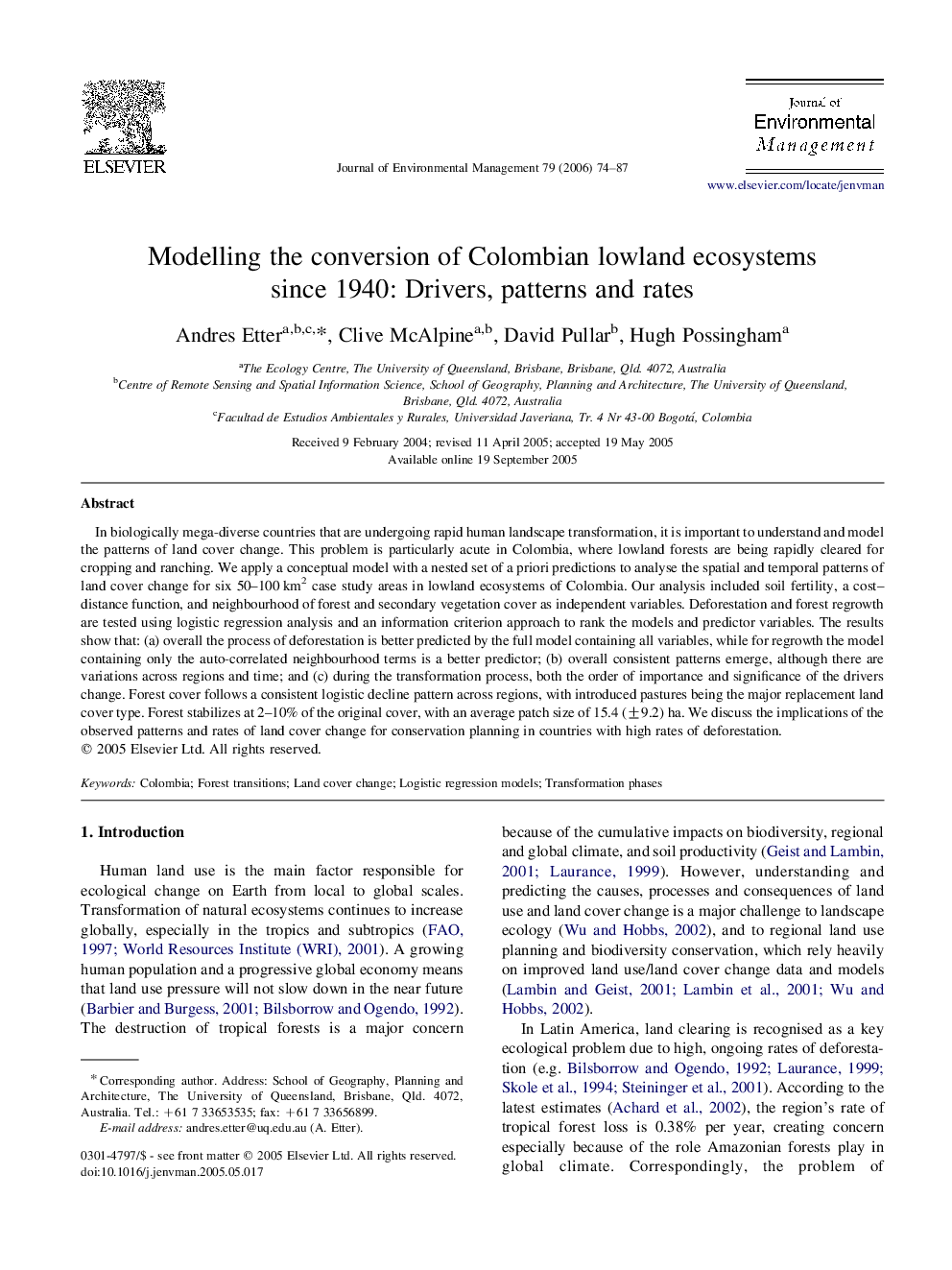| Article ID | Journal | Published Year | Pages | File Type |
|---|---|---|---|---|
| 1058397 | Journal of Environmental Management | 2006 | 14 Pages |
In biologically mega-diverse countries that are undergoing rapid human landscape transformation, it is important to understand and model the patterns of land cover change. This problem is particularly acute in Colombia, where lowland forests are being rapidly cleared for cropping and ranching. We apply a conceptual model with a nested set of a priori predictions to analyse the spatial and temporal patterns of land cover change for six 50–100 km2 case study areas in lowland ecosystems of Colombia. Our analysis included soil fertility, a cost–distance function, and neighbourhood of forest and secondary vegetation cover as independent variables. Deforestation and forest regrowth are tested using logistic regression analysis and an information criterion approach to rank the models and predictor variables. The results show that: (a) overall the process of deforestation is better predicted by the full model containing all variables, while for regrowth the model containing only the auto-correlated neighbourhood terms is a better predictor; (b) overall consistent patterns emerge, although there are variations across regions and time; and (c) during the transformation process, both the order of importance and significance of the drivers change. Forest cover follows a consistent logistic decline pattern across regions, with introduced pastures being the major replacement land cover type. Forest stabilizes at 2–10% of the original cover, with an average patch size of 15.4 (±9.2) ha. We discuss the implications of the observed patterns and rates of land cover change for conservation planning in countries with high rates of deforestation.
